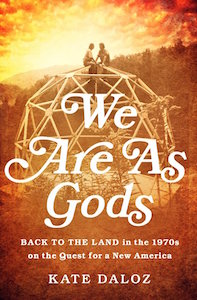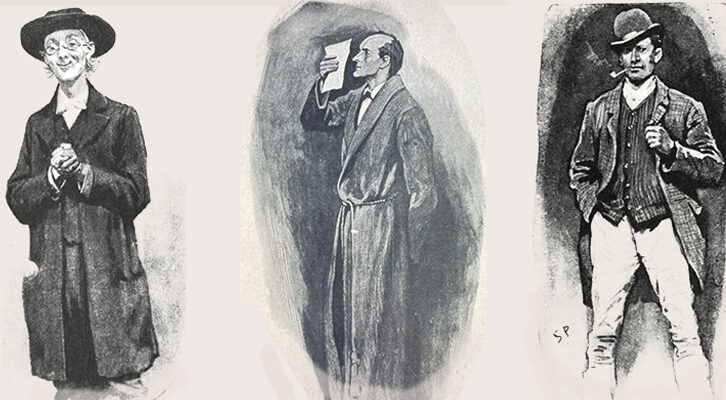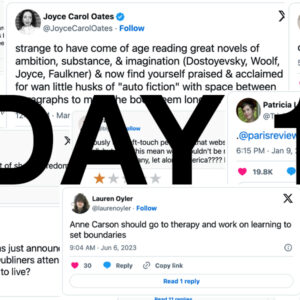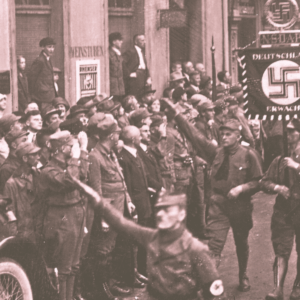
The Other White Flight: When College Kids Went Back to the Land
Kate Daloz on the Origins of an Accidental Movement
“There’s a definite panic on the hip scene in Cambridge,” wrote student radical Raymond Mungo, “people going to uncommonly arduous lengths (debt, sacrifice, the prospect of cold toes and brown rice forever) to get away while there’s still time.” And it wasn’t just Cambridge. All over the nation at the dawn of the 1970s, young people were suddenly feeling an urge to get away, to leave the city behind for a new way of life in the country.
Some, like Mungo, filled an elderly New England farmhouse with a tangle of comrades. Others sought out mountain-side hermitages in New Mexico or remote single-family Edens in Tennessee. Hilltop Maoists traversed their fields with horse-drawn plows. Graduate students who had never before held a hammer overhauled tobacco barns and flipped through the Whole Earth Catalog by the light of kerosene lamps. Vietnam vets hand-mixed adobe bricks. Born-and-bred Brooklynites felled cedar in Oregon. Former debutants milked goats in Humboldt County and weeded strawberry beds with their babies strapped to their backs. Famous musicians forked organic compost into upstate gardens. College professors committed themselves to winter commutes that required swapping high heels for cross-country skis. Computer programmers turned the last page of Scott and Helen Nearing’s Living the Good Life and packed their families into the car the next day.
Most had no farming or carpentry experience, but no matter. To go back to the land, it seemed, all that was necessary was an ardent belief that life in Middle America was corrupt and hollow, that consumer goods were burdensome and unnecessary, that protest was better lived than shouted, and that the best response to a broken culture was to simply reinvent it from scratch.
What felt to each like a deeply personal, unique response to the pressures and opportunities of their own lives, was in fact being made almost simultaneously by thousands of other young people all across the country at the same moment for almost the same reasons.
They were acting, in part, on a characteristically American assumption that if things get bad where we are—too hectic, too dangerous, too messy—we can simply decamp to a new frontier and start again, that all we need to begin a new venture or even create a new society is a new piece of land. But while there have always been individuals, families, or groups who walked away from city life with high hopes, no other moment in American history has seen anything like the shift that happened as the 1960s turned into the 1970s.
In the shadow of the Vietnam War and amidst widespread social upheaval, this ever-present American urge to reinvent ourselves in the wilderness spiked into its largest, most influential and most radical manifestation ever. That decade, as many as a million young Americans uprooted themselves, almost en masse, abandoning their urban and suburban backgrounds in favor of a life in the countryside.
They were almost all white, well-educated, and from middle-class or wealthy backgrounds. This was not a coincidence. For many, the choice to live a life of radical austerity and anachronism was certainly a rebellion against the comfort and prosperity of their Eisenhower-era childhoods, but that same background of comfort also offered a security and safety net that made such radical choices possible. For some, trust funds and allowances actually financed their rural experiments; for most others, family support was more implied than actual—if things really went wrong on the farm, they knew, their parents could bail them out or take them in. But even those who had cut ties with their families altogether were still the recipients of a particular, inherited confidence. Writing in 1968, sociologist Kenneth Keniston noted that the undergraduates he studied were concerned about finding “exciting, honorable and effective ways of using their intelligence,” but that in over a decade of interviews, he had not met a single one who was worried about finding work. White parents who had exited the Depression into the middle class had raised their children to take affluence and freedom from want for granted, and to expect that a college education entitled you to a good job, whenever you might choose to pursue it. “The feeling—to be very Superkids!” Tom Wolfe wrote in 1968, “feeling immune, beyond calamity. One’s parents remembered the sloughing common order, War & Depression—but Superkids knew only the emotional surge of the great payoff.”
But parents who’d lived through the Depression and the Holocaust hadn’t shed their own anxieties, and they didn’t fully succeed in hiding them from their children. Postwar kids listened to adults assure them that the world was now perfectly safe, but they saw evidence to the contrary everywhere—in their father’s penny-pinching and their mother’s overstuffed pantry, in photographs of Dachau and of Hiroshima. Parents and teachers who insisted to children that ducking under desks would save them from a nuclear attack succeeded only in pushing the children’s fear deeper—not only were they not safe, many concluded, the adults wouldn’t even admit it. They’d have to save themselves.
“Our work is guided by the sense that we may be the last generation in the experiment with living,” wrote the authors of the Port Huron Statement, the 1962 manifesto that helped kick off a decade of student activism. Young people’s Cold War fears were temporarily assuaged by the Atomic Test Ban Treaty of 1963—only to be replaced immediately by another horrifying specter. “The Bomb had receded to the status of an abstract threat,” writes historian and former student activist, Todd Gitlin, “but the Vietnam war was actual, nothing potential or abstract about it; napalm was scorching actual flesh, bombs were tearing apart actual bodies, and there, right there, were the traces, smeared across the tube and the daily paper—every day you had to go out of your way to duck them.”
The sudden, spontaneous back-to-the-land movement emerged from the collision between this crushing, apocalyptic fear and the generational confidence that convinced its young people they were still entitled to the world as they wanted it. As Keniston put it, “Never before have so many who had so much been so deeply disenchanted with their inheritance.” To a privileged generation exhausted by shouting NO to every aspect of the American society they were raised to inherit, rural life represented a way to say yes.
* * * *
Especially early on, the decision to begin a new life in the country felt urgent, lifesaving. “When I left the city I felt that one year among green trees and breathable air was all I asked out of life—that if I was going to die soon at least I would grow one flower first,” wrote Elaine Sundancer of her 1969 decision to leave San Francisco for a commune in Oregon.
“The move to the country is a doomsday decision,” declared journalist Mark Kramer. “It almost always starts out as a retreat, after other alternatives become too unpalatable.” Reflecting on his own 1969 move “from city politics to rural subsistence farming,” he noted, “It turns out that a farm with friends is a very pleasant street corner to hang out on while waiting for the bomb to fall.”
As the decade wore on, back-to-the-landers—both those who chose to live communally and those who did not—were driven by more personal sources of urgency. Some quit good jobs, convinced that no paycheck was worth even a single morning of struggling into neckties or pantyhose. Some yearned for quietude after exhausting years of sit-ins, marches, and the numbing shock of mourning leader after slain leader. Some hoped to sow the seeds of a new society, one whose ideals they and their friends could start living out immediately. Others just wanted a life that would replace TV dinners with organically grown tomatoes, radio jingles with early-morning songbirds, and suburban “boxes made of ticky-tacky” with quirkily unique living spaces they’d build themselves. Whatever their individual reasons, together, their numbers were immense. The 1970s remain the only moment in the nation’s history when more people moved to rural areas than into the cities, briefly reversing two hundred years of steady urbanization.
But despite the huge numbers, the decision to go back to the land felt so personal that many had no idea others were doing the same. “Only afterward was it called a movement,” wrote Robert Houriet, one of the period’s keenest observers. “At the outset, it was the gut reaction of a generation.”
* * * *
While it’s hard to identify an exact starting time for a spontaneous, mass “gut reaction,” the clearest candidate is the autumn of 1967.
Over the preceding months, one hundred thousand young people had converged on the San Francisco neighborhood of Haight Ashbury. “The Summer of Love” had been invented and publicized by Haight Ashbury’s business council (the Haight Independent Proprietors), over the vocal protests of the Diggers, street activists who were already struggling to feed, house, and treat the thousands of runaway teenagers who had been pouring into the city for months. In a broadside titled “Uncle Tim$ Children,” activist Chester Anderson wrote, “The HIP Merchants—the cats who have sold our loverly little psychedelic community to the mass media, to the world, to you—. . . don’t see hunger, hip brutality, rape, gangbangs, gonorrhea, syphillis [sic], theft, hunger, filth.” As Digger and actor Peter Coyote remembered the moment, “a number of older hands realized that the area was poised to become unlivable due to the accelerated influx of new residents. . . It was obvious that we could not craft an autonomous life on top of the asphalt, and many people planned moves to the country.”
That same autumn, the psychedelic newspaper the San Francisco Oracle put out its most widely read issue ever. In it was an interview with Timothy Leary in which he explained, in part, what he had meant a few months earlier by his exhortation for young people to “drop out.” “The main message,” he said, “is to get out of the city and go to the land.”
Those leaving San Francisco tended to head north up the California coast or inland to the Southwest, but the trend soon followed to East Coast cities as well. Richard Fairfield, who had started observing and documenting American utopian movements several years earlier, noticed a “mass upsurge of nation-wide interest in rural living in the hippie subculture” in the months following the Summer of Love.
And in fact, a country commune boom was already under way. By one contemporary count, there were twelve rural communes in 1967; just a few years later the numbers had skyrocketed to the thousands—as many as ten thousand by some estimates.
The height of the commune boom was brief but it had a tremendous lasting impact—not, as many assume, simply on American spirituality or communal organizations alone (though both of those are true), but more profoundly: on kicking off the biggest, most widespread urban-to-rural shift in American history. “Not since the fall of Babylon have so many city dwellers wanted to ‘return’ to the country without ever having been there in the first place,” wrote one observer in 1972.
Publications like the Whole Earth Catalog, invented by or developed to support early rural communes’ efforts at self-sufficient living, and organized structures like co-ops and organic food networks soon became vital resources for the waves of other, noncommunal but still radically self-sufficient back-to-the-landers that continued throughout the decade. In 1970, Schocken Books, capitalizing on the counterculture’s sudden interest in instruction manuals for subsistence living, reissued a previously little-read volume with a new foreword by Paul Goodman. Scott and Helen Nearing’s Living the Good Life immediately sold fifty thousand copies and became a classic, inspiring thousands of eager young people to try their own hand at single-family homesteading.
By the mid-70s, the commune period had ended but the back-to-the-land movement was still in full swing: radical social experiments in group living had been replaced by individual families’ radical experiments in self-sufficiency—including my family’s.

Excerpted from WE ARE AS GODS by Kate Daloz. Copyright © 2016 by . Excerpted by permission of Public Affairs.
Kate Daloz
Kate Daloz received her MFA from Columbia University, where she also taught undergraduate writing and served as assistant director of the Writing Center. She teaches in the writing center at Baruch College and works as a freelance writing consultant. Daloz grew up in Vermont's Northeast Kingdom, in the geodesic dome her parents built after coming home from the Peace Corps. She was also a research assistant for Ron Chernow (Washington: A Life) and Stacy Schiff (Cleopatra: A Life), as well as Brenda Wineapple (White Heat: The Friendship of Emily Dickenson and Thomas Wentworth Higginson) and is a founding member of Neuwrite: Columbia Scientists and Writers. Her work has appeared in The American Scholar among other publications. Kate Daloz lives in Brooklyn with her husband and children.



















